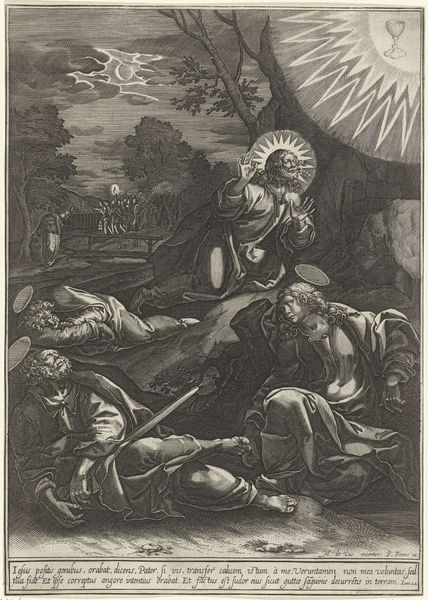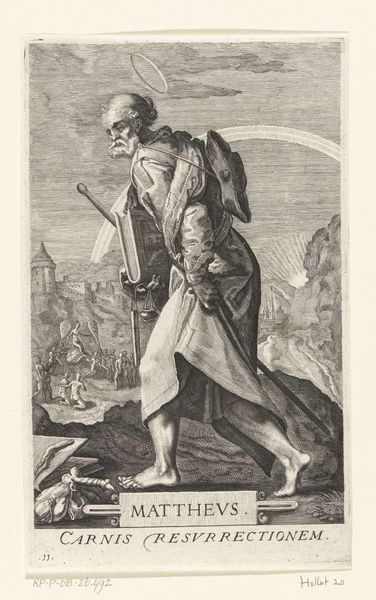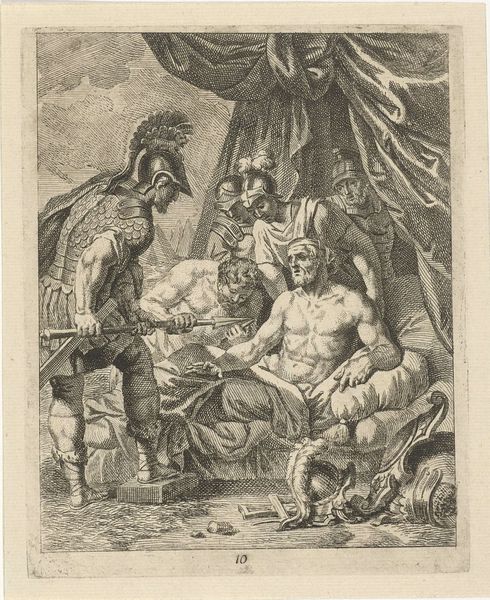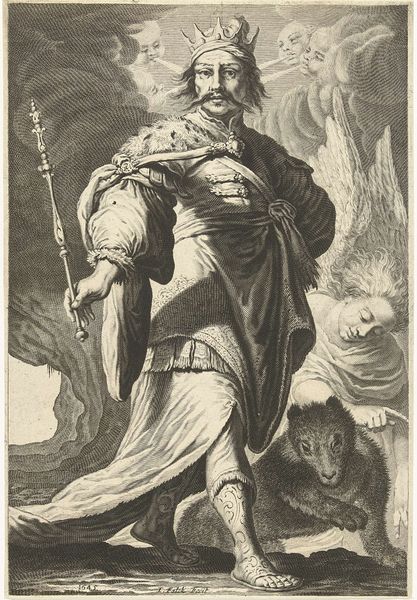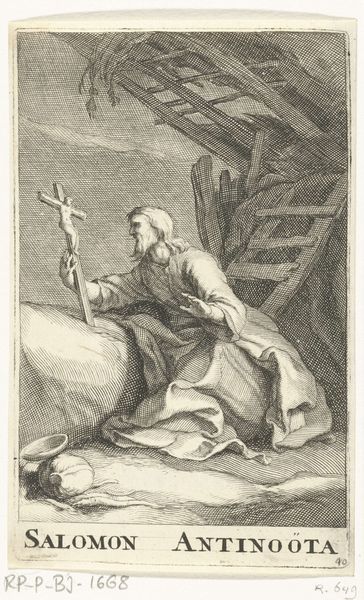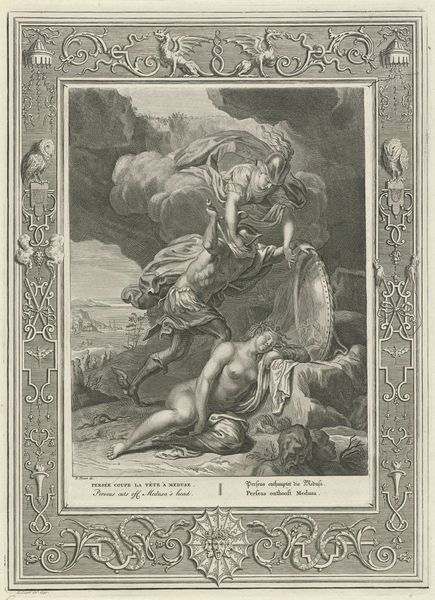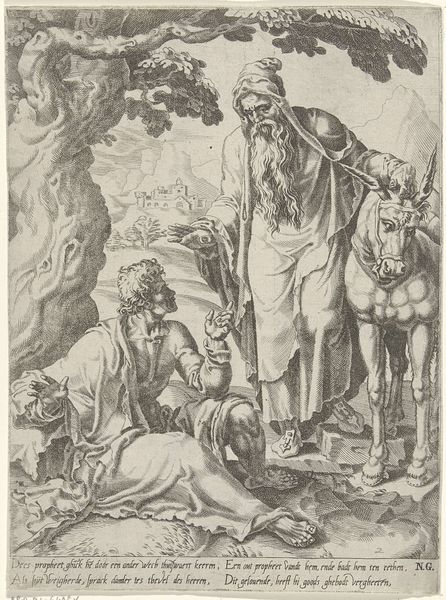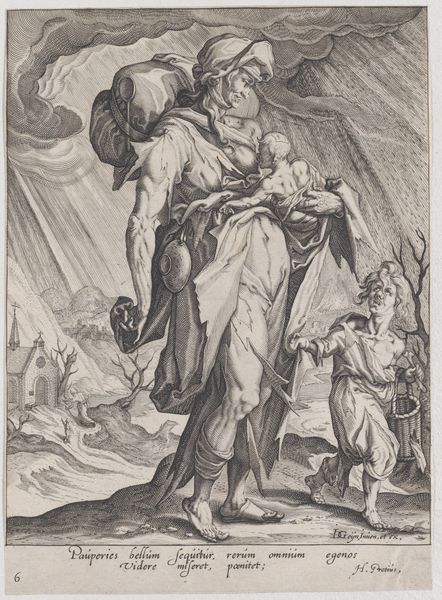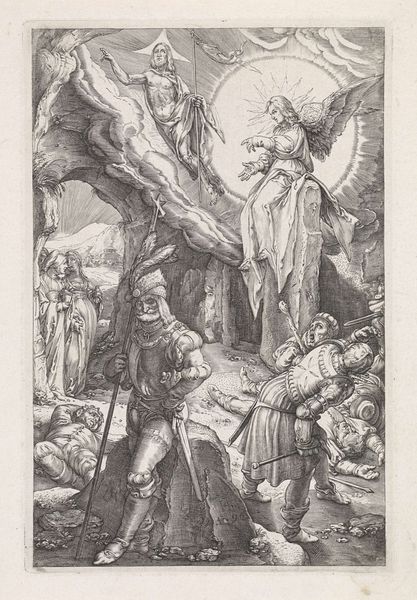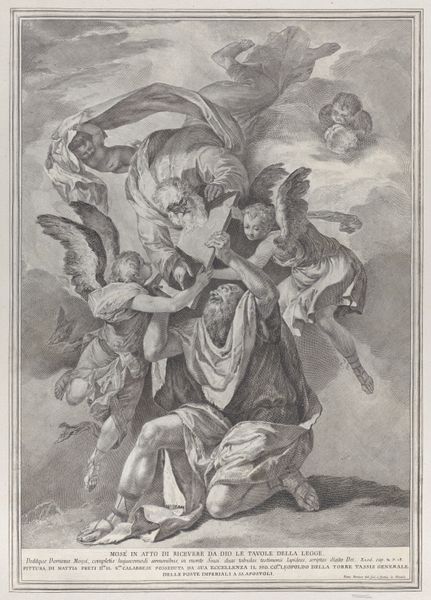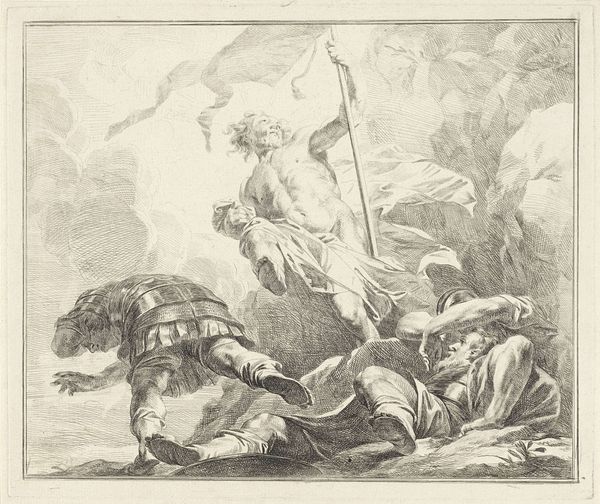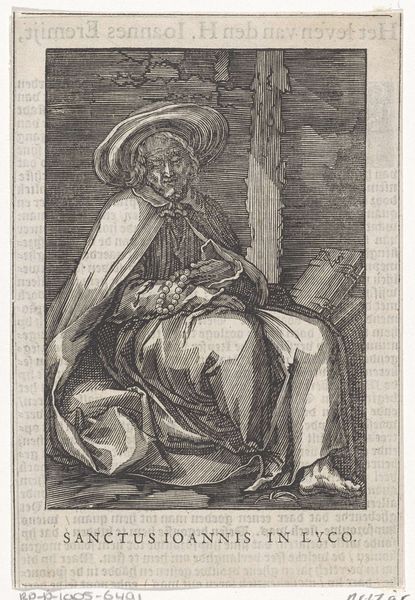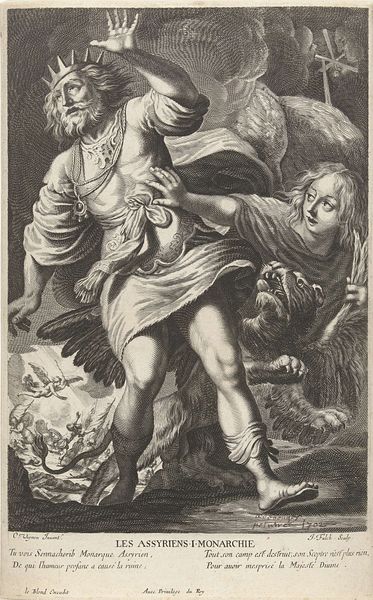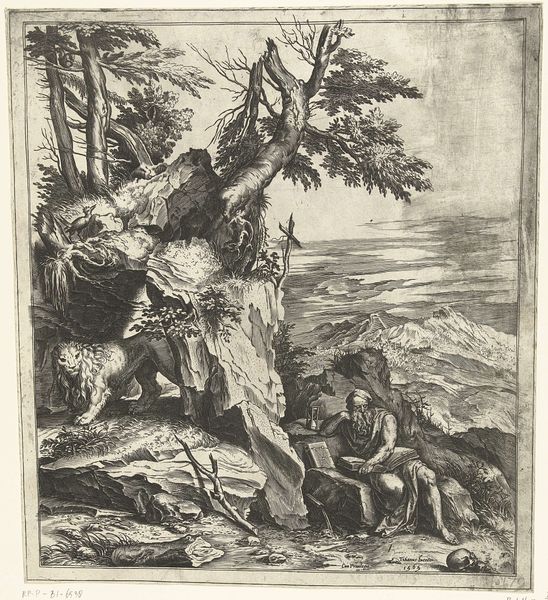
#
light pencil work
#
pencil sketch
#
charcoal drawing
#
junji ito style
#
pencil drawing
#
ink drawing experimentation
#
pen-ink sketch
#
surrealism
#
portrait drawing
#
pencil work
Dimensions: height 242 mm, width 173 mm
Copyright: Rijks Museum: Open Domain
Curator: This compelling piece is by Jacob Gole. Titled "Officier met een beenwond", or "Officer with a Leg Wound," it was created sometime between 1670 and 1724. It now resides here at the Rijksmuseum. Editor: What strikes me immediately is the somber tone, even tragic, created by the high contrast of light and shadow in this pencil work. The officer’s expression is just... grief-stricken. Curator: Absolutely. Consider the broader context. Gole lived during a time of immense social upheaval, constant wars and burgeoning class divides. The print encapsulates the often unseen realities of military life. Notice how the fallen soldier at the officer’s feet lacks the same elaborate attire, further reinforcing a commentary on hierarchical structures and the sacrifices made by common soldiers. Editor: Indeed, that juxtaposition is striking. The diagonal composition further enhances that divide. The eye is led from the luminous, detailed face of the officer down to the bare foot emerging from the shadowed area; the composition leads the viewers into that feeling. Curator: The fallen soldier is essential to understanding power structures and the human cost of war in this era. Look closer at the officer himself; his lavish clothing signifies the economic disparities. One is reminded of Foucault's discussion of power relations and how social hierarchies manifest visibly within a society. Editor: It’s fascinating how the meticulous detail almost contradicts the loose form of the sketch itself. There's a tension in that duality of form and content. Is that grief rooted in concern for this injured soldier, or some internalized remorse because of an understood societal cost? Curator: It begs us to contemplate notions of power, culpability, and class at the time, all within a militaristic society. And this work provides critical insight into how war traumatizes not only those physically wounded but also those burdened by their positions within that militaristic class. Editor: What this artwork excels at is its ability to invite endless possibilities, a dialogue between the eye and its intent. Curator: Precisely. Gole’s etching presents not merely a visual representation but rather, invites thoughtful examination of historical dynamics woven into our understanding of social systems and the costs they perpetuate.
Comments
No comments
Be the first to comment and join the conversation on the ultimate creative platform.
